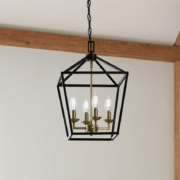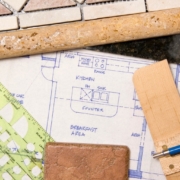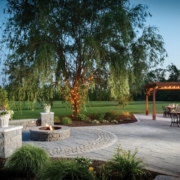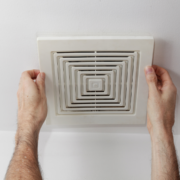Gifts for the home are appreciated for years come.
If you’re like most people, you’ve spent more time at home in the last year and a half than ever before. While there are probably things you love about your house, spending so much time there makes you acutely aware of where upgrades are in order.
Fortunately, you don’t need to spend a lot of money on renovations to give your home a refresh. This holiday season treat yourself to these gifts for the home that will help you elevate favorite spaces so you can enjoy them for years to come:
Sing In the Shower
Imagine taking a soothing shower and as the warm water washes over you, you’re also surrounded by your favorite sounds. This immersive sensory experience is a great way to wake up in the morning or relax in the evening, thanks to the multifunctional Moxie showerhead.
Combining a luxurious spray with a high-quality audio speaker with sound by Harman Kardon, this wireless speaker elevates every shower. Whether you’re in the mood for a favorite podcast, rocking out to dance music or breathing deep to calming tunes, you can customize the experience by pairing it to your phone or other personal device. Plus, because it’s portable, you can bring it wherever you want to go, from the bathroom to the bedroom and beyond.
Ease Kitchen Cleanup
Whether you’re baking treats to spread some joy or cooking up a feast for friends and family, the kitchen becomes the hub of the home. This also means it can become mess central. With a Kohler Step Can garbage container, throwing away messes is simple with hands-free operation thanks to a sturdy foot pedal.
From slim 2.5-gallon trash cans to large 13-gallon options, there are sizes to fit any space. Clean lines and thoughtful designs allow it to be placed right against the wall or a cabinet for a flush fit. Made with a sleek stainless-steel fingerprint-proof finish, this can will stay cleaner longer, no matter how messy your kitchen adventures get.
Style The Bathroom
Bathroom countertops can become chaotic surfaces packed with grooming and wellness supplies. A touch of organization can transform the space with style similar to what you see in home magazines. Explore Bente collection accessory sets in a variety of colors to match your bathroom aesthetic, including ebony pearl, oyster pearl and herringbone.
These accessory sets hold favorite bathroom supplies, enhancing the beauty and organization of the bathroom countertop space. This helps you create a cohesive, elevated look that is especially appreciated if you’re hosting guests. Staying at someone else’s home? Bente sets come in a beautiful gift box and make a great hostess gift.
Create Mood with Light
When you update lighting, you not only add style to spaces, you make them more functional, too. Ambient lighting is typically overhead lighting that can be adjusted to brighten or dim the room to set the mood or enhance surrounding light. Adding task lighting designs, such as a lighted bathroom mirror with magnification or a decorative tabletop reading lamp, elevates the overall decor aesthetic, while also providing the perfect light for grooming to start your day or an intimate lighting source to help you tuck into that favorite book at night. Accent lighting can highlight architectural details and other decorative elements within a home. When all of these lighting types align, you can create a sophisticated atmosphere that is also intuitive to your personal taste and lifestyle.
No matter what your lighting needs, Kohler lighting is available in a wide range of styles and finishes for whole home solutions. From statement-making chandeliers and flush-mounts to pendants, sconces and bath bars that can be paired or grouped for dramatic effect, each piece is
expertly crafted using the finest materials and is quality tested to ensure the design remains beautiful for many years to come. Many of the Kohler Lighting designs also offer color-matched finishes to complement Kohler faucets and fixtures for seamless bathroom applications.
Whether it’s a gift for yourself or a gift for a loved one, these upgrades are high impact yet affordable. This makes spending time at home more enjoyable than ever. (BPT)











